Introduction
Corn and ribs soup, a beloved comfort dish in many cuisines, often undergoes a striking transformation during cooking: its clear broth gradually turns into a rich, opaque white. This phenomenon has puzzled home cooks and culinary enthusiasts alike, prompting questions about the chemical and physical processes driving this change. While the dish’s flavor is universally praised, the science behind its milky appearance remains a topic of fascination. This article delves into the intricate interplay of ingredients, heat, and molecular reactions that turn a simple mixture of corn, ribs, and water into a velvety, white elixir. By exploring the roles of proteins, fats, starches, and cooking techniques, we will demystify the alchemy of this humble yet complex soup.
The Role of Proteins and Fats: The Foundation of Emulsification
At the heart of the soup’s white color lies the concept of emulsification, a process where fat and water molecules bond to form a stable mixture. In corn and ribs soup, the primary sources of fat are pork ribs, which contain marbling—striations of fat within the muscle tissue. When subjected to heat, these fats melt and disperse into tiny droplets. Meanwhile, the ribs’ connective tissues, rich in collagen, break down into gelatin during prolonged simmering. Gelatin, a protein, acts as a natural emulsifier, helping fat droplets remain suspended in the aqueous broth rather than separating and rising to the top.
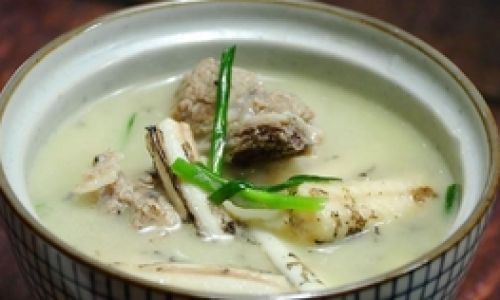
The corn contributes another layer of complexity. Corn kernels contain starch granules that swell and burst when heated, releasing amylopectin and amylose—long-chain carbohydrates. These starches interact with the fat and protein molecules, creating a network that traps light, giving the soup its characteristic opacity. The combination of melted fat, gelatin, and starch forms a colloidal suspension, a mixture where particles are evenly distributed but not dissolved. This suspension scatters light waves, resulting in the milky white hue.
The Maillard Reaction and Caramelization: Flavor and Color Synergy
While emulsification is the primary driver of the soup’s white color, secondary reactions also contribute to its appearance and taste. The Maillard reaction, a chemical process between amino acids and reducing sugars, occurs when ribs are seared or simmered at high temperatures. This reaction produces hundreds of flavor compounds, including melanoidins—brown pigments that deepen the soup’s color. However, in corn and ribs soup, the Maillard reaction is often mitigated by the soup’s simmering process, which keeps temperatures below the threshold for excessive browning. Instead, the reaction contributes subtle umami notes without darkening the broth significantly.
Caramelization, the oxidation of sugars, also plays a role. Corn contains natural sugars like sucrose and glucose, which break down at high temperatures. While caramelization typically produces golden-brown hues, the sugars in corn and ribs soup are diluted in water, preventing significant color change. Instead, they enhance the soup’s sweetness and complexity, balancing the savory notes from the ribs.
The Impact of Cooking Techniques: Time, Temperature, and Agitation
Achieving the perfect white hue requires precise control over cooking variables. Simmering, not boiling, is critical. High heat causes fat and protein molecules to coagulate rapidly, forming large, unstable particles that clump together and rise to the surface as scum. Gentle simmering allows fat to melt gradually, creating smaller droplets that remain evenly dispersed. Additionally, simmering preserves the integrity of the corn’s starch granules, preventing them from breaking down too quickly and creating a cloudy broth.
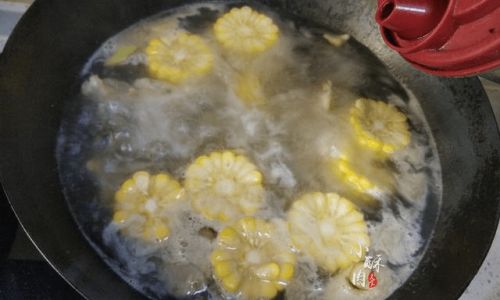
Skimming, the process of removing impurities and foam from the soup’s surface, also influences color. Foam consists of denatured proteins and impurities that, if left unchecked, can create a dull, grayish tint. Regular skimming during the first 30 minutes of cooking ensures a cleaner, brighter white base.
Agitation, such as stirring, further aids emulsification. The mechanical action helps distribute fat droplets and starch molecules uniformly, preventing separation. However, excessive stirring can break down the corn kernels, releasing excess starch and making the soup overly thick or gluey. A delicate balance is essential.
The Influence of Ingredients: Corn Varieties, Rib Cuts, and Additives
Not all corn and ribs are created equal. Sweet corn, with its high sugar content and tender kernels, releases more starch than field corn, resulting in a thicker, whiter soup. Yellow corn imparts a golden tint, while white corn maintains a purer white hue. The choice of ribs also matters: pork spare ribs, with their higher fat content, produce a richer emulsion than leaner cuts like baby back ribs. Marrow-rich bones, such as neck bones or oxtail, further enhance the soup’s creaminess by adding gelatin.
Some recipes call for adding dairy, such as milk or cream, to amplify the white color. However, traditional corn and ribs soup relies solely on natural emulsification. Ingredients like ginger or garlic, while optional, can alter the soup’s appearance by introducing enzymes that break down proteins or starches, potentially affecting emulsion stability.
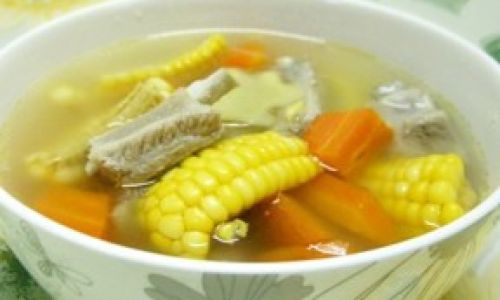
Common Misconceptions: Debunking Myths About White Soup
One prevalent myth is that the soup’s white color indicates the presence of bone marrow or artificial additives. While marrow does contribute to richness, the primary emulsifiers are collagen-derived gelatin and corn starch. Another misconception is that boiling the soup vigorously speeds up the process. In reality, aggressive boiling disrupts emulsion formation, leading to a greasy, separated broth.
Some cooks believe that blending the corn or ribs can hasten the release of starches or fats. While blending does accelerate starch extraction, it can also create a gritty texture if not done carefully. Traditional methods favor slow cooking to preserve the soup’s delicate balance.
Cultural Significance: The White Soup in Global Cuisines
The pursuit of a white, creamy broth transcends cultural boundaries. In Chinese cuisine, laurou tang (pork rib soup) is revered for its nourishing properties, with the white color symbolizing purity and richness. Similarly, in Mexican cuisine, sopa de elote (corn soup) achieves a milky consistency through prolonged simmering and the use of fresh corn. European recipes, such as Italian zuppa di mais, also rely on emulsification to create a velvety texture.
The white soup’s appeal lies in its association with comfort and health. In many cultures, it is served to convalescents or those in need of sustenance, as the emulsified fats and proteins are easily digestible. The color itself evokes feelings of warmth and familiarity, making it a staple in family meals and celebratory feasts alike.

Step-by-Step Guide to Achieving the Perfect White Soup
- Select Quality Ingredients: Choose fresh, sweet corn and meaty ribs with visible marbling. Opt for pork spare ribs or neck bones for maximum gelatin.
- Blanch the Ribs: Parboil the ribs in boiling water for 5 minutes to remove impurities. Drain and rinse under cold water to halt cooking.
- Sear the Ribs (Optional): Lightly browning the ribs in a hot pan enhances flavor but may darken the broth. Skip this step for a purer white hue.
- Simmer Gently: Place the ribs, corn, and aromatics (ginger, scallions) in a pot. Cover with cold water and bring to a bare simmer. Maintain low heat (85–90°C/185–195°F) for 2–3 hours.
- Skim Regularly: Remove foam and fat every 15–20 minutes during the first hour.
- Add Starches Strategically: If using dried corn or low-starch corn, add a tablespoon of rice flour or cornstarch mixed with cold water during the last 30 minutes to thicken.
- Adjust Seasoning: Salt the soup towards the end of cooking to avoid toughening the meat. Avoid acidic ingredients like tomatoes, which can break emulsions.
- Rest Before Serving: Let the soup cool slightly to allow flavors to meld and the emulsion to stabilize.
Health and Nutritional Considerations
Corn and ribs soup is not only visually appealing but also nutritionally balanced. The ribs provide protein, iron, and B vitamins, while corn contributes dietary fiber, antioxidants, and vitamins A and C. The emulsified fats enhance the absorption of fat-soluble vitamins like vitamin D and E. However, the soup’s high calorie and sodium content warrant moderation, especially for those monitoring their intake.
Troubleshooting Common Issues
- Cloudy Broth: Caused by aggressive boiling or insufficient skimming. Reduce heat and skim more diligently.
- Thin Consistency: Extend simmering time or add a starch slurry.
- Greasy Film: Chill the soup overnight to solidify fat, then scrape it off before reheating.
- Grayish Tint: Overcooking or excess impurities. Blanch ribs thoroughly and avoid prolonged boiling.
Advanced Techniques: Modern Twists on a Classic
Contemporary chefs experiment with sous-vide cooking and liquid nitrogen to achieve ultra-smooth textures. Sous-vide ribs, cooked at 65°C (149°F) for 24 hours, yield exceptionally tender meat and clear gelatin. The cooking liquid can then be emulsified with corn purée using an immersion blender, creating a silken soup with a velvety mouthfeel.
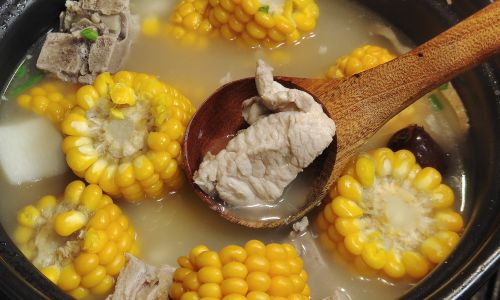
Another innovation is the use of spherification, a molecular gastronomy technique where corn juice is encapsulated in calcium alginate spheres. When added to the soup, the spheres burst, releasing bursts of sweet corn flavor.
Conclusion
The transformation of corn and ribs soup into a milky white broth is a testament to the beauty of culinary science. Through the harmonious interaction of proteins, fats, and starches, guided by precise techniques and quality ingredients, a simple dish becomes a canvas for molecular artistry. Whether enjoyed in a bustling night market or a serene home kitchen, this soup’s white hue symbolizes more than just aesthetics—it embodies the alchemy of tradition, patience, and the joy of sharing a meal. The next time you simmer a pot of this beloved dish, marvel not just at its flavor, but at the invisible dance of molecules that turned water into gold.
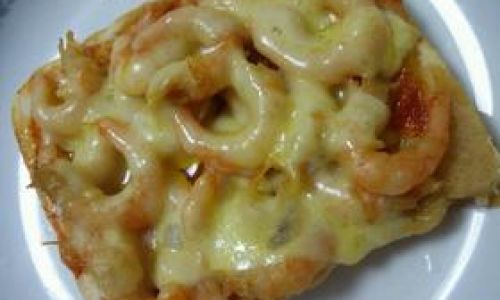
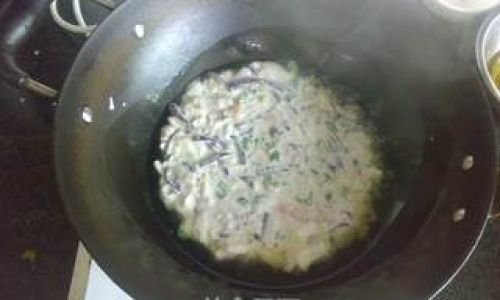
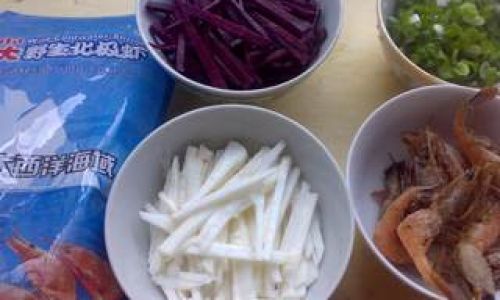
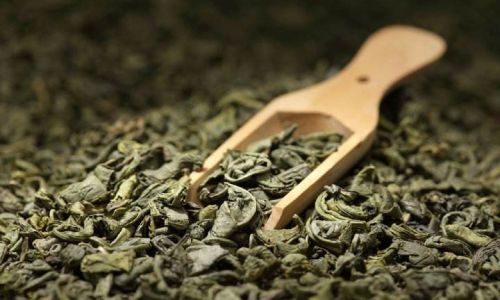
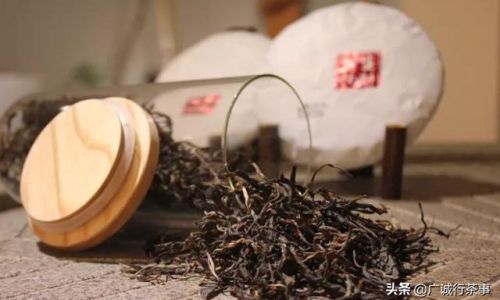
0 comments